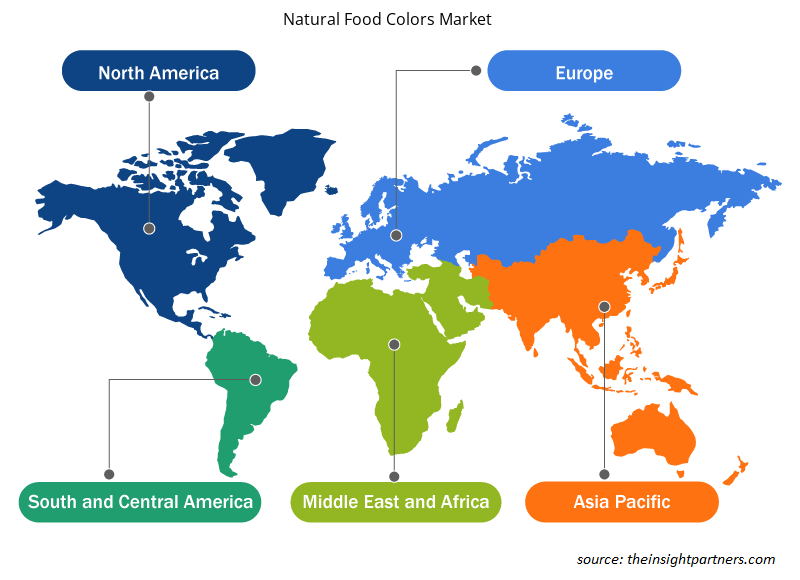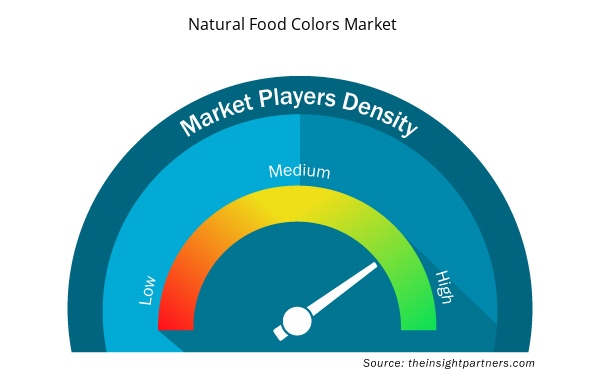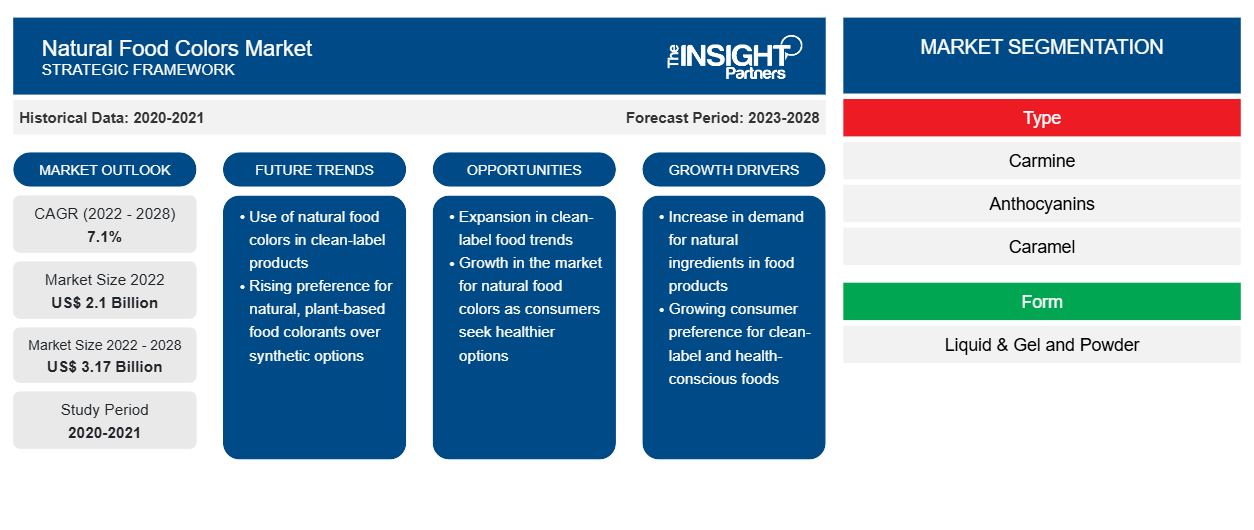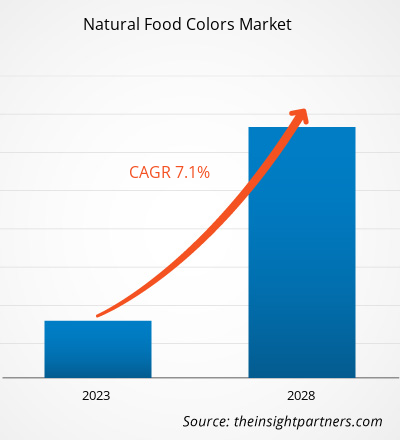[研究报告] 天然食用色素市场规模预计将从 2022 年的 21 亿美元增至 2028 年的 31.7 亿美元。预计 2022-2028 年期间的复合年增长率为 7.1%。
由于消费者对合成色素有害影响的认识不断提高,以及政府对合成色素使用的法规不断出台,天然食用色素的需求不断增加。如今,大多数人都开始注重健康,并选择有机和天然产品。天然食用色素食用安全,并能增加食物的营养价值。此外,天然食用色素不含常见的易过敏成分。相反,它们含有抗氧化剂,可降低多种疾病的风险。所有这些因素都在推动市场的发展。
由于 Koninklijke DSM NV、Sensient Technologies 和 Archer Daniels Midland Company 等知名公司的强势存在,预计未来几年市场将出现显着增长。各种各样的天然食用色素引起了消费者的关注。消费包装 RTE 和 RTC 食品的趋势日益增长。预计这一因素将在预测期内为天然食用色素制造商提供新的机会。
2021 年,欧洲占据全球天然食用色素市场的主要份额。然而,预计亚太地区在预测期内的市场复合年增长率最高。亚太市场分为中国、印度、澳大利亚、日本、韩国和亚太地区其他地区。由于人口增长和消费者饮食习惯的改变,食品和饮料行业是亚太地区蓬勃发展的行业之一。发展中国家消费者的可支配收入急剧增加,购买力也随之提高。消费者可支配收入水平的提高和中产阶级人口的增长是推动该地区天然食用色素市场发展的关键因素之一。
定制此报告以满足您的需求
您可以免费定制任何报告,包括本报告的部分内容、国家级分析、Excel 数据包,以及为初创企业和大学提供优惠和折扣
- 获取此报告的关键市场趋势。这个免费样品将包括数据分析,从市场趋势到估计和预测。
COVID-19 疫情对天然食用色素市场的影响
在新冠疫情爆发之前,天然食用色素市场的增长主要得益于对营养价值高的有机和天然食品的需求不断增长。然而,由于企业停工以及原材料和劳动力短缺,市场在 2020 年第一季度面临障碍。新冠疫情导致 2020 年头几个月出现经济衰退,给低收入和中等收入消费者带来了经济困难。
此外,由于限制措施,人们呆在家里做饭,对易于烹饪的包装食品产生了需求。这增加了对 RTE 和 RTC 食品的需求,从而推动了天然食用色素市场的增长。消费者也变得注重健康,更喜欢天然且更安全的食品。这推动了 COVID-19 大流行期间的市场增长。
市场洞察
消费者对清洁标签产品的兴趣日益增加
许多人认为,只有贴有可识别成分标签的食品和饮料产品才更健康。食品和饮料行业已进入清洁标签产品阶段,制造商纷纷采用天然食品色素来获得竞争优势。清洁标签产品也吸引了更多客户,因为消费者更愿意消费成分已知的产品。
由于健康意识的增强和食品掺假现象的出现,消费者对清洁标签产品的倾向性正在上升。这导致消费者在购买任何产品之前都会查看标签。这一因素预计将成为天然食用色素市场的关键驱动因素。
类别洞察
根据产品类型,全球天然食用色素市场细分为胭脂红、花青素、焦糖、姜黄素、胭脂树红、类胡萝卜素、叶绿素等。2021 年,类胡萝卜素部分占据了最大的收入份额,而花青素部分预计将在预测期内占据最高的增长率。天然食用色素来自植物、动物和其他有机材料。它们不含易过敏成分,可以安全食用。
Koninklijke DSM NV、Sensient Technologies、Archer Daniels Midland Company、Döhler Group、BASF SE、Naturex SA、Aromata Group、Givaudan、Dupont、Oterra A/S 和 Mane KANCOR 是市场上的参与者。这些公司为市场提供广泛的产品组合。这些公司在发展中地区都有业务,提供了有利可图的市场机会。市场参与者正在开发高质量、创新的产品以满足客户要求。
天然食品色素市场区域洞察
Insight Partners 的分析师已详细解释了预测期内影响天然食品色素市场的区域趋势和因素。本节还讨论了北美、欧洲、亚太地区、中东和非洲以及南美和中美洲的天然食品色素市场细分和地理分布。

- 获取天然食品色素市场的区域特定数据
天然食品色素市场报告范围
| 报告属性 | 细节 |
|---|---|
| 2022 年市场规模 | 21亿美元 |
| 2028 年市场规模 | 31.7亿美元 |
| 全球复合年增长率(2022 - 2028) | 7.1% |
| 史料 | 2020-2021 |
| 预测期 | 2023-2028 |
| 涵盖的领域 | 按类型
|
| 覆盖地区和国家 | 北美
|
| 市场领导者和主要公司简介 |
|
天然食品色素市场参与者密度:了解其对业务动态的影响
天然食用色素市场正在快速增长,这得益于终端用户需求的不断增长,而这些需求又源于消费者偏好的不断变化、技术进步以及对产品优势的认识不断提高等因素。随着需求的增加,企业正在扩大其产品范围,进行创新以满足消费者的需求,并利用新兴趋势,从而进一步推动市场增长。
市场参与者密度是指在特定市场或行业内运营的企业或公司的分布情况。它表明在给定市场空间中,相对于其规模或总市场价值,有多少竞争对手(市场参与者)存在。
在天然食用色素市场运营的主要公司有:
- 荷兰皇家帝斯曼集团
- Sensient 技术
- 阿彻丹尼尔斯米德兰公司
- 德勒集团
- 巴斯夫
免责声明:上面列出的公司没有按照任何特定顺序排列。

- 了解天然食品色素市场顶级关键参与者概况
报告亮点
- 市场上不断发展的行业趋势,帮助参与者制定有效的长期战略
- 发达市场和发展中市场采用的业务增长战略
- 2020 年至 2028 年天然食用色素产品市场规模定量分析
- 全球天然食用色素市场需求预测
- PEST 分析可说明行业内买家和供应商的效率
- 了解竞争市场状况的最新发展
- 市场趋势和前景以及推动和抑制天然食用色素市场增长的因素
- 通过强调支撑商业利益的市场策略来协助决策过程,从而促进市场增长
- 天然食用色素市场不同节点的规模
- 市场的详细概述和细分,以及天然食用色素行业动态
- 各地区天然食用色素市场规模及增长潜力巨大
“2028 年天然食品色素市场分析”是一项针对消费品行业的专业深入研究,特别关注全球天然食品色素市场趋势分析。该报告旨在提供市场概况,并进行详细的市场细分。
天然食用色素市场根据类型、形式、应用和地理位置进行分析。根据类型,全球天然食用色素市场分为胭脂红、花青素、焦糖、姜黄素、胭脂树红、类胡萝卜素、叶绿素等。就形式而言,全球天然食用色素市场分为液体和凝胶以及粉末。根据应用,全球天然食用色素市场分为烘焙和糖果、乳制品和冷冻甜点、饮料、酱汁、调味品和调味品、RTC 和 RTE 产品、肉类、家禽和海鲜等。根据地理位置,市场大致分为北美、欧洲、亚太地区 (APAC)、中东和非洲 (MEA) 以及南美洲和中美洲。
公司简介
Koninklijke DSM NV、Sensient Technologies、Archer Daniels Midland Company、Döhler Group、BASF SE、Naturex SA、Aromata Group、Givaudan、Dupont、Oterra A/S 和 Mane KANCOR 是全球天然食品色素市场上的知名参与者。
- 历史分析(2 年)、基准年、预测(7 年)及复合年增长率
- PEST 和 SWOT 分析
- 市场规模价值/数量 - 全球、区域、国家
- 行业和竞争格局
- Excel 数据集


- Legal Case Management Software Market
- Excimer & Femtosecond Ophthalmic Lasers Market
- Quantitative Structure-Activity Relationship (QSAR) Market
- Small Molecule Drug Discovery Market
- Greens Powder Market
- Hydrocephalus Shunts Market
- HVAC Sensors Market
- Wind Turbine Composites Market
- Medical Enzyme Technology Market
- Cut Flowers Market

Report Coverage
Revenue forecast, Company Analysis, Industry landscape, Growth factors, and Trends

Segment Covered
This text is related
to segments covered.

Regional Scope
North America, Europe, Asia Pacific, Middle East & Africa, South & Central America

Country Scope
This text is related
to country scope.
常见问题
Availability of a wide range of natural food colors has allowed consumers to opt for natural food products instead of synthetic ones. There is a wide range of natural food colors that is available in the market. Newly introduced colors, and trends have increased the product portfolios of many companies. Manufacturers such as Naturex, Oterra, and Kancor offer wide range of natural food colors in the market. Growing trends of mix and match colors has also affected in increasing the range of colors. Aromata Group has recently added a range of shades range, that has many different colors used in sweet and savory applications.
Based on the application, beverages segment accounted for the highest share of the global market in 2021. The beverages industry is growing rapidly, and people are preferring beverages which contain natural ingredients.
Based on the segment type, anthocyanins is expected to be the fastest-growing segment during the forecast period. Anthocyanins possess antidiabetic, anticancer, anti-inflammatory, antimicrobial, and anti-obesity effects, as well as prevention of cardiovascular diseases (CVDs). Therefore, anthocyanins extracted from edible plants have various health benefits.
Rising consumer concerns about synthetic ingredients and increasing consumer proclivity towards clean label products are drivers of natural food colors market. Natural food colors contain antioxidants which are helpful in reducing risk of various diseases. Increasing health awareness among consumers have risen the demand for natural and organic food products.
The major players operating in the global natural food colors market are Koninklijke DSM N.V., Sensient Technologies, Archer Daniels Midland Company, Döhler Group, BASF SE, Naturex S.A, Aromata Group, Givaudan, Dupont, Oterra A/S, and Mane KANCOR.
In 2021, Europe accounted for the largest share of the global natural food colors market. The growth of the natural food colors industry is also attributed to the rising awareness regarding the harmful effects of synthetic colors. People are trying to consume organic and natural food products as they are safe and healthy for human body. This factor is driving the growth of the natural food colors market in the region.
Trends and growth analysis reports related to Food and Beverages : READ MORE..
The List of Companies - Natural Food Colors Market
- Koninklijke DSM N.V.
- Sensient Technologies
- Archer Daniels Midland Company
- Döhler Group
- BASF SE
- Naturex S.A
- Aromata Group
- Givaudan
- Dupont
- Oterra A/S
- Mane KANCOR
The Insight Partners performs research in 4 major stages: Data Collection & Secondary Research, Primary Research, Data Analysis and Data Triangulation & Final Review.
- Data Collection and Secondary Research:
As a market research and consulting firm operating from a decade, we have published and advised several client across the globe. First step for any study will start with an assessment of currently available data and insights from existing reports. Further, historical and current market information is collected from Investor Presentations, Annual Reports, SEC Filings, etc., and other information related to company’s performance and market positioning are gathered from Paid Databases (Factiva, Hoovers, and Reuters) and various other publications available in public domain.
Several associations trade associates, technical forums, institutes, societies and organization are accessed to gain technical as well as market related insights through their publications such as research papers, blogs and press releases related to the studies are referred to get cues about the market. Further, white papers, journals, magazines, and other news articles published in last 3 years are scrutinized and analyzed to understand the current market trends.
- Primary Research:
The primarily interview analysis comprise of data obtained from industry participants interview and answers to survey questions gathered by in-house primary team.
For primary research, interviews are conducted with industry experts/CEOs/Marketing Managers/VPs/Subject Matter Experts from both demand and supply side to get a 360-degree view of the market. The primary team conducts several interviews based on the complexity of the markets to understand the various market trends and dynamics which makes research more credible and precise.
A typical research interview fulfils the following functions:
- Provides first-hand information on the market size, market trends, growth trends, competitive landscape, and outlook
- Validates and strengthens in-house secondary research findings
- Develops the analysis team’s expertise and market understanding
Primary research involves email interactions and telephone interviews for each market, category, segment, and sub-segment across geographies. The participants who typically take part in such a process include, but are not limited to:
- Industry participants: VPs, business development managers, market intelligence managers and national sales managers
- Outside experts: Valuation experts, research analysts and key opinion leaders specializing in the electronics and semiconductor industry.
Below is the breakup of our primary respondents by company, designation, and region:

Once we receive the confirmation from primary research sources or primary respondents, we finalize the base year market estimation and forecast the data as per the macroeconomic and microeconomic factors assessed during data collection.
- Data Analysis:
Once data is validated through both secondary as well as primary respondents, we finalize the market estimations by hypothesis formulation and factor analysis at regional and country level.
- Macro-Economic Factor Analysis:
We analyse macroeconomic indicators such the gross domestic product (GDP), increase in the demand for goods and services across industries, technological advancement, regional economic growth, governmental policies, the influence of COVID-19, PEST analysis, and other aspects. This analysis aids in setting benchmarks for various nations/regions and approximating market splits. Additionally, the general trend of the aforementioned components aid in determining the market's development possibilities.
- Country Level Data:
Various factors that are especially aligned to the country are taken into account to determine the market size for a certain area and country, including the presence of vendors, such as headquarters and offices, the country's GDP, demand patterns, and industry growth. To comprehend the market dynamics for the nation, a number of growth variables, inhibitors, application areas, and current market trends are researched. The aforementioned elements aid in determining the country's overall market's growth potential.
- Company Profile:
The “Table of Contents” is formulated by listing and analyzing more than 25 - 30 companies operating in the market ecosystem across geographies. However, we profile only 10 companies as a standard practice in our syndicate reports. These 10 companies comprise leading, emerging, and regional players. Nonetheless, our analysis is not restricted to the 10 listed companies, we also analyze other companies present in the market to develop a holistic view and understand the prevailing trends. The “Company Profiles” section in the report covers key facts, business description, products & services, financial information, SWOT analysis, and key developments. The financial information presented is extracted from the annual reports and official documents of the publicly listed companies. Upon collecting the information for the sections of respective companies, we verify them via various primary sources and then compile the data in respective company profiles. The company level information helps us in deriving the base number as well as in forecasting the market size.
- Developing Base Number:
Aggregation of sales statistics (2020-2022) and macro-economic factor, and other secondary and primary research insights are utilized to arrive at base number and related market shares for 2022. The data gaps are identified in this step and relevant market data is analyzed, collected from paid primary interviews or databases. On finalizing the base year market size, forecasts are developed on the basis of macro-economic, industry and market growth factors and company level analysis.
- Data Triangulation and Final Review:
The market findings and base year market size calculations are validated from supply as well as demand side. Demand side validations are based on macro-economic factor analysis and benchmarks for respective regions and countries. In case of supply side validations, revenues of major companies are estimated (in case not available) based on industry benchmark, approximate number of employees, product portfolio, and primary interviews revenues are gathered. Further revenue from target product/service segment is assessed to avoid overshooting of market statistics. In case of heavy deviations between supply and demand side values, all thes steps are repeated to achieve synchronization.
We follow an iterative model, wherein we share our research findings with Subject Matter Experts (SME’s) and Key Opinion Leaders (KOLs) until consensus view of the market is not formulated – this model negates any drastic deviation in the opinions of experts. Only validated and universally acceptable research findings are quoted in our reports.
We have important check points that we use to validate our research findings – which we call – data triangulation, where we validate the information, we generate from secondary sources with primary interviews and then we re-validate with our internal data bases and Subject matter experts. This comprehensive model enables us to deliver high quality, reliable data in shortest possible time.


 获取此报告的免费样本
获取此报告的免费样本